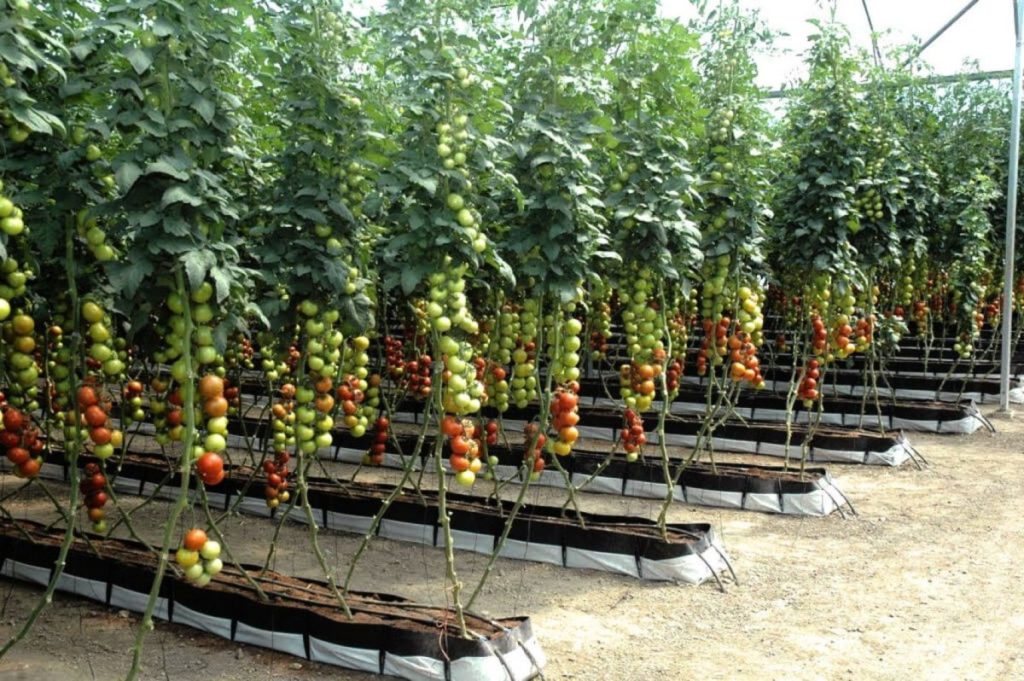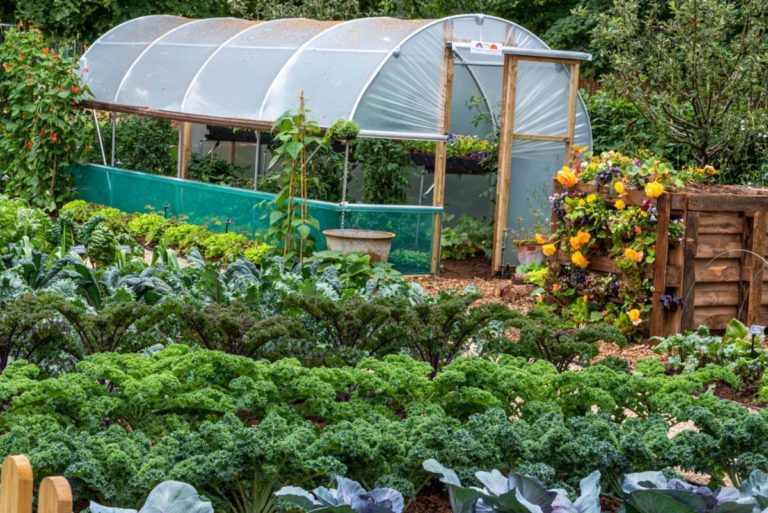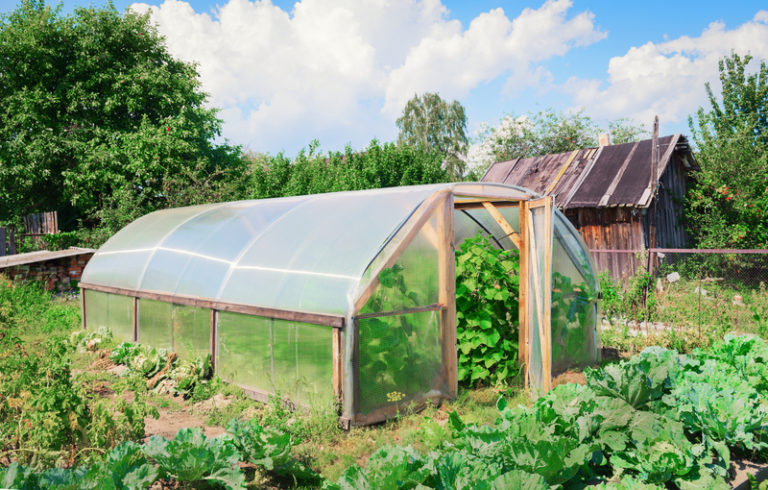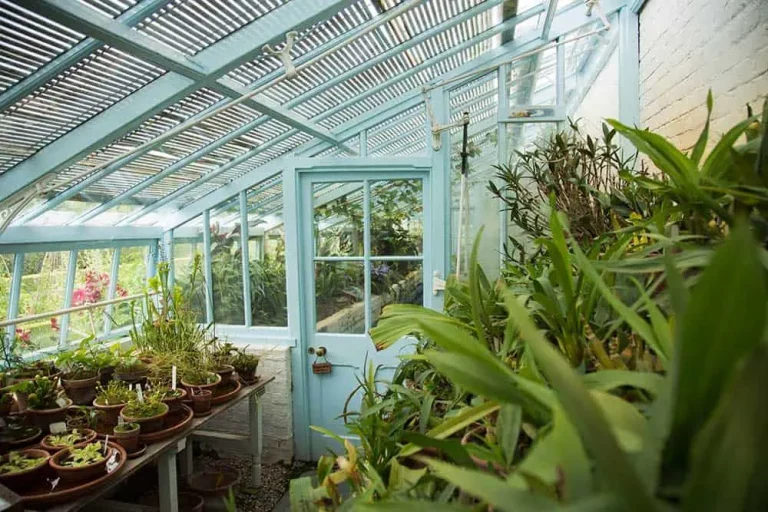Looking to maximize your tomato harvest in a compact space?
Look no further than vertical farming!
By growing tomatoes vertically, you can increase yields and save valuable real estate.
But proper care and maintenance are important for healthy, thriving vines.
We’ll dive into the tips and techniques for success with vertical farming tomatoes.
Whether you’re a seasoned grower or just starting out, these expert-approved strategies will help your plants flourish and produce bountiful yields.
So let’s get started!
Choose the Right Variety
Select tomato varieties that are well-suited for vertical farming, such as determinate varieties that stop growing once they reach a certain height. These varieties will produce more compact vines that are easier to manage in a vertical space.
Determinate varieties, such as ‘Bush Early Girl’ or ‘Patio’, are ideal for vertical farming due to their compact growth habits.
Unlike indeterminate varieties, which will continue to grow and produce fruit until killed by frost, determinate varieties stop growing once they reach a certain height, typically around 3-4 feet tall.
This compact growth makes them easier to manage in a vertical space, allowing for more efficient use of space and resources.
These varieties will still produce an abundance of fruit, but the vines will be more manageable and easier to support in a vertically-stacked system.
Determinate varieties tend to have shorter harvest seasons, which can help simplify crop management and increase the overall efficiency of the vertical farm.
By selecting well-suited tomato varieties like these determinates, farmers can ensure a productive and profitable vertical farming operation.
Provide Adequate Lighting
Tomatoes need adequate light to grow, so ensure that your vertical farming system provides enough light for your plants. This can be achieved through the use of LED grow lights or by positioning your plants in a location with ample natural light.
Tomatoes require a significant amount of light to grow, so it’s important to ensure that your vertical farming system provides enough illumination for your plants.
One effective solution is to use LED grow lights, which are specifically designed to emit the specific wavelengths of light that plants need for photosynthesis.
These lights can be positioned directly over the plants or placed at a slight angle to provide even coverage.
Another option is to position your tomato plants in a location with ample natural light, such as near a window or under skylights.
This can be especially beneficial if you have a greenhouse or indoor growing space with plenty of sunlight.
Regardless of which lighting method you choose, it’s essential to ensure that your plants receive at least 6 hours of direct light per day to promote healthy growth and fruit production.
By providing adequate lighting, you can help your tomatoes thrive and produce bountiful harvests.
Use a Support System
Tomatoes need support as they grow, so use a support system such as a trellis or cage to help the vines grow upwards and produce more fruit.
For optimal growth and fruit production, tomato plants require support as they sprawl and vine outwards.
A support system such as a trellis or cage can help the vines grow upwards and produce more fruit.
By providing a structure for the vines to climb on, you can encourage the plant to grow vertically, which leads to more efficient use of space and increased yields.
Support systems can help protect the plants from wind and soil erosion, which can damage the plants and reduce fruit production.
By investing in a support system for your tomato plants, you can enjoy healthier, more productive plants and a greater harvest.
Optimize Temperature and Humidity
Tomatoes thrive in temperatures between 65-95°F (18-35°C) and a relative humidity of 60-70%. Ensure that your vertical farming system is capable of maintaining these ideal conditions.
When it comes to growing juicy and flavorful tomatoes, temperature and humidity play a important role.
Tomatoes thrive in temperatures between 65-95°F (18-35°C), with an ideal relative humidity of 60-70%.
To ensure optimal growth and fruit production, it is essential to maintain a consistent and controlled environment within your vertical farming system.
This can be achieved through the use of advanced climate control systems, such as heating, ventilation, and air conditioning (HVAC) systems, as well as humidity control systems.
By carefully regulating temperature and humidity levels, you can create a favorable environment for your tomato plants to flourish, resulting in healthier and more productive growth.
By maintaining a consistent temperature range, you can help to prevent the growth of harmful bacteria and diseases, ensuring the overall health and quality of your crops.
Monitor and Control Pests
Tomatoes are susceptible to pests such as whiteflies, aphids, and spider mites. Regularly monitor your plants and use organic or integrated pest management techniques to keep pests under control.
Tomatoes are susceptible to pests such as whiteflies, aphids, and spider mites, which can cause significant damage to the plants if left unchecked.
To prevent infestations, it’s essential to regularly monitor your plants for any signs of pests, such as soft or distorted leaves, discoloration, or the presence of actual pests.
If you notice any pests, take action immediately using organic or integrated pest management techniques.
For example, you can use neem oil or insecticidal soap to kill the pests, or introduce beneficial insects like lady beetles or lacewings to prey on the pests.
Maintaining good garden hygiene, such as removing weeds and debris, and keeping your tools and equipment clean, can help prevent pest infestations.
By taking these proactive measures, you can keep your tomato plants healthy and productive, and enjoy a bountiful harvest.
Provide Adequate Water and Nutrients
Tomatoes need consistent moisture and nutrients to produce healthy fruit. Use a hydroponic system or a well-draining soil mix to ensure that your plants receive enough water and nutrients.
Tomatoes thrive when they receive consistent moisture and nutrients.
To ensure that your plants receive enough water and nutrients, consider using a hydroponic system or a well-draining soil mix.
Hydroponic systems provide a consistent and controlled supply of water and nutrients to the plants, which can lead to healthier and more productive fruit production.
A well-draining soil mix can help prevent waterlogged soil conditions that can lead to root rot and other issues.
By using either of these methods, you can ensure that your tomato plants receive the necessary nutrients and moisture to produce healthy fruit.
This will help prevent waterlogged soil conditions and root rot, and promote healthy fruit production.
Use a Soil-Based System
While hydroponics can be effective for growing tomatoes, a soil-based system can provide better yields and more consistent results. Soil-based systems also offer better control over the root zone, which can lead to healthier plants and better fruit production.
While hydroponics can be effective for growing tomatoes, a soil-based system can provide better yields and more consistent results.
The root zone is a critical component of plant growth, and soil-based systems allow for better control over this environment.
With soil-based systems, gardeners can manipulate the nutrient and water uptake by the plants, leading to healthier plants and better fruit production.
In contrast, hydroponics often relies on a controlled, predetermined nutrient solution, which may not provide the same level of control over the root zone.
Soil-based systems can provide better aeration and drainage, which can further contribute to healthier plant growth.
Overall, while hydroponics may offer some advantages in terms of water conservation and space efficiency, soil-based systems are generally better suited for growing tomatoes, especially for gardeners looking to achieve high yields and consistent results.
Monitor and Control Diseases
Tomatoes are susceptible to diseases such as fusarium wilt, verticillium wilt, and powdery mildew. Regularly monitor your plants for signs of disease and use organic or integrated disease management techniques to keep your plants healthy.
Tomatoes, one of the most popular garden vegetables, are susceptible to several diseases that can cause significant yield loss and plant decline.
Three common diseases that affect tomatoes are fusarium wilt, verticillium wilt, and powdery mildew.
Fusarium wilt is caused by a fungal pathogen that can survive in the soil for several years, making it challenging to control.
Symptoms include yellowing leaves, browning of stems, and premature defoliation.
Verticillium wilt is another fungal disease that can be spread through irrigation water or contaminated soil.
Symptoms include yellowing leaves, stunted growth, and wilted appearance.
Powdery mildew, caused by a fungus that overwinters on plant debris, can lead to leaf loss, stunted growth, and reduced fruit production.
To keep your tomato plants healthy and productive, it’s important to regularly monitor them for signs of disease.
Check for yellowing leaves, blackened stems, and any other unusual symptoms.
If you notice any of these signs, take prompt action using organic or integrated disease management techniques.
For fusarium wilt and verticillium wilt, remove infected plants to prevent the spread of the disease.
For powdery mildew, treat infected plants with a fungicide and improve air circulation to reduce humidity.
In addition to disease management, maintaining good soil health and providing adequate nutrients can help strengthen your tomato plants’ immune systems, making them less susceptible to disease.
Use crop rotation, proper fertilization, and well-draining soil to promote healthy growth.
By taking proactive steps, you can minimize disease loss and enjoy a bountiful tomato harvest.]
Tomatoes are one of the most popular garden vegetables, but they are also susceptible to various diseases that can cause significant yield loss.
Regular monitoring of your tomato plants is important to prevent the spread of diseases and ensure a bountiful harvest.
Yellowing leaves, blackened stems, and stunted growth can all be signs of disease, so it’s important to inspect your plants regularly and take prompt action if you notice any of these symptoms.
There are several organic and integrated disease management techniques that you can use to keep your tomato plants healthy.
For fusarium wilt and verticillium wilt, it’s important to remove infected plants to prevent the spread of the disease.
For powdery mildew, treating infected plants with a fungicide and improving air circulation can help to reduce humidity and prevent the spread of the disease.
In addition to regular monitoring and integrated pest management techniques, it’s also important to maintain good garden hygiene practices.
This includes removing weeds, which can serve as a habitat for pests and diseases, and disposing of any infected plants in a responsible manner to prevent the spread of disease to other plants.
Want More? Dive Deeper Here!
Hey there! If you’re the type who loves going down the rabbit hole of information (like we do), you’re in the right spot. We’ve pulled together some cool reads and resources that dive a bit deeper into the stuff we chat about on our site. Whether you’re just killing time or super into the topic, these picks might just be what you’re looking for. Happy reading!






